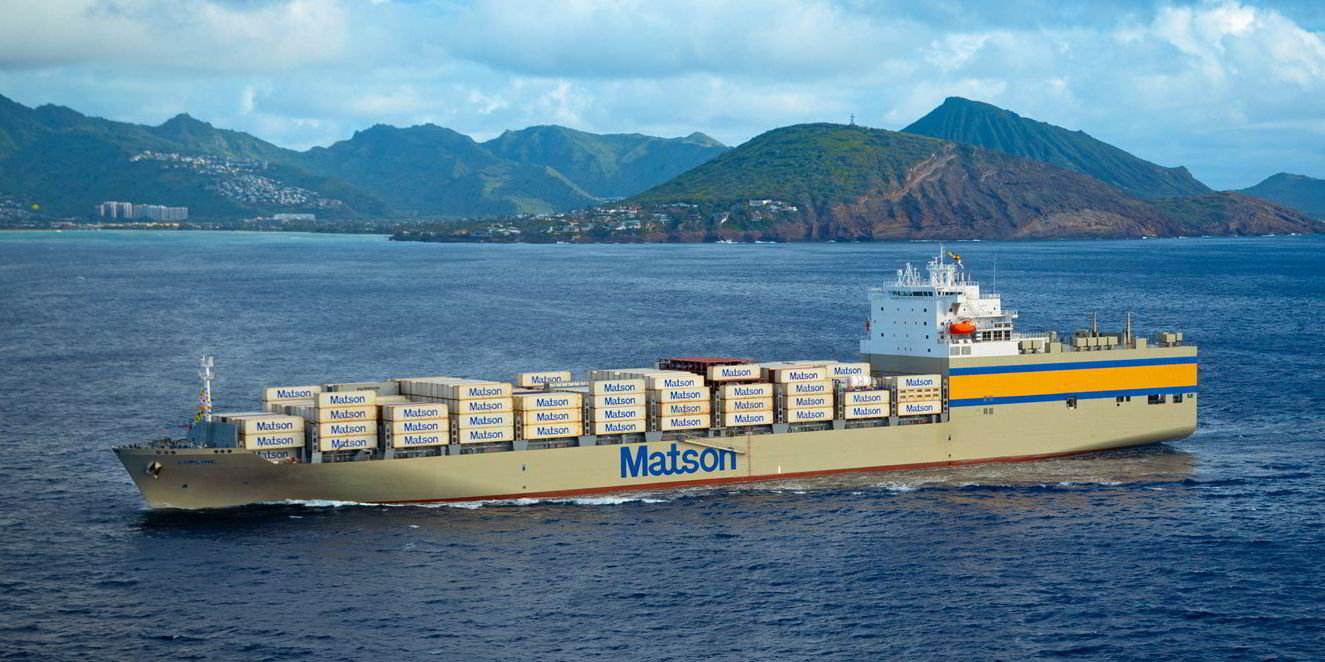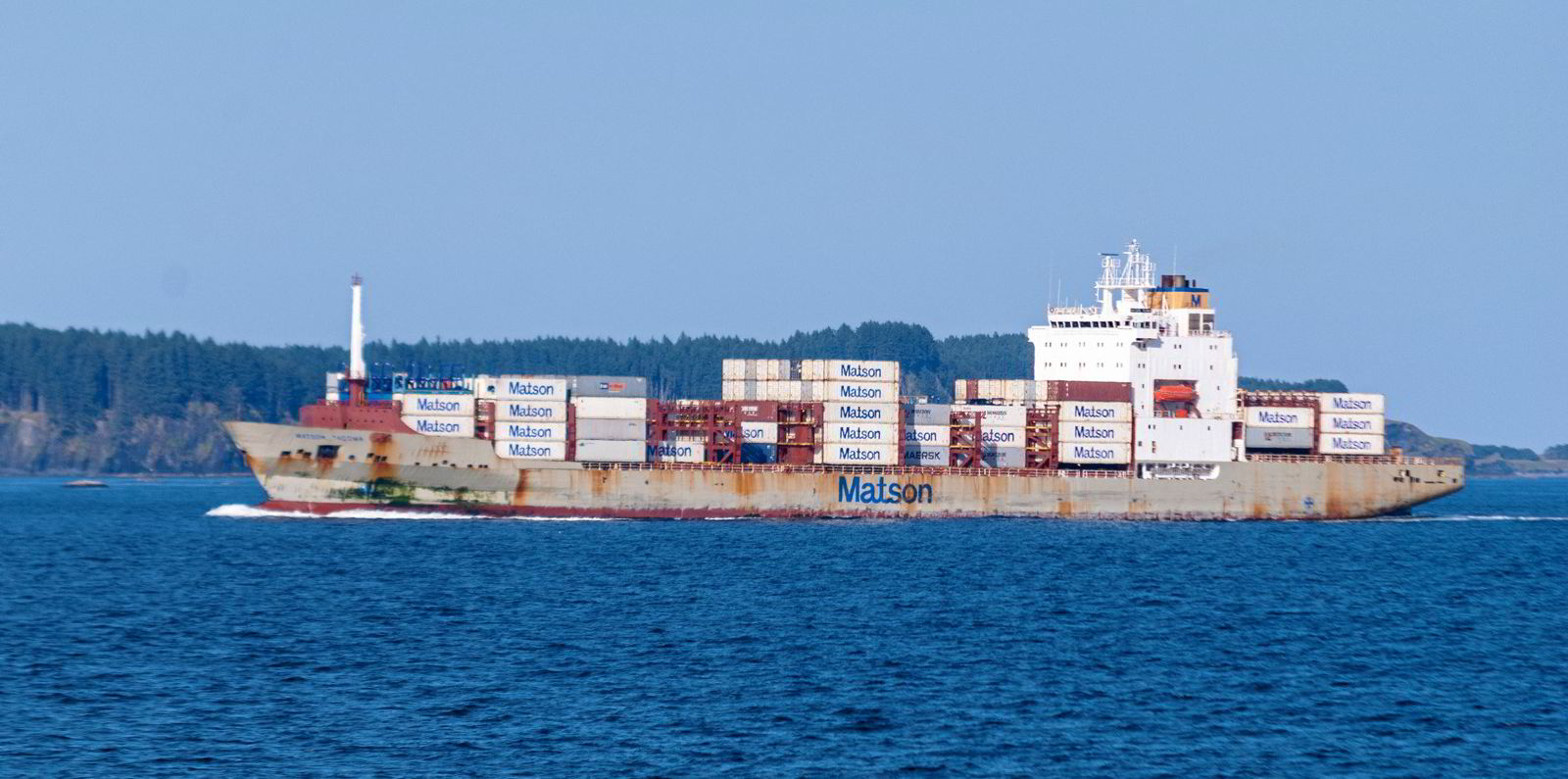Stifel has lowered its rating on Matson as the US Jones Act container ship owner faces multiple headwinds, despite earning higher profit compared to a year ago.
The US investment bank has downgraded its rating on Matson’s shares to ‘hold’ from ‘buy’ while dropping its price target to $93 from $131.
“We are taking down our 2023 and 2024 estimates on tempered expectations around pricing amid softer container rates, volume headwinds associated with slowing economic activity and broad cost inflation,” analyst Ben Nolan wrote in a note to clients.
“The broader container market is probably moving into a period of oversupply, and there is palpable economic uncertainty.”
New York-listed Matson reported $381m in profit for the second quarter on Monday, compared to $163m earned during the same period in 2021. Revenue totalled $1.26bn, up from $875m a year earlier
Its fast China California Express (CCX) service boosted results by improving volume by 11.7% from a year ago to 48,700 feu for the quarter, but Stifel warned that a weaker market may be on the horizon.
“Cash flow is also almost certainly going to be declining from current levels,” Nolan wrote.
He also said that volume for Matson’s Alaska-Asia Express delivery service from the US to Asia also improved by 12.2% to 22,100 feu in the second quarter, but economic headwinds may hurt future business.
“While tourism continues to recover, recessionary signals coupled with rising interest rates could further slow the volume recovery,” Nolan said.
“While expedited container shipping rates are a bit more insulated than standard container rates, they are not immune, and we could see the spread between the two contracts, with management even commenting they expect pricing to come down, albeit off of very high levels.”
During a call with analysts on Monday, chief executive Matt Cox said a weakening global economy could slow tourism and consumer spending in its core domestic markets in Alaska, Hawaii and Guam.

“The combination of high inflation, higher interest rates and lower personal income with the end of the pandemic era stimulus is likely having a negative impact on household income and consequently, consumer goods demand,” he said.
He also said that fewer boxship backups on the US West Coast as shippers reroute to the East Coast has hurt demand for Matson’s CCX service, which primarily calls at the Port of Oakland.
As a result, Matson may “wind down” the CCX service but keep it on standby should congestion return while keeping its China-Long Beach Express (CLX) route at full service, he said.
“We have a lot of optionality here, he said.
Still, transpacific freight rates have fallen as a result of inflation and higher interest rates hurting inflation, but they have not dropped drastically, Cox said.
“I would say they’re adjusting slowly and they are moving, but there’s no bottoming or falling off a cliff,” he said.
“So we’re seeing rates decline from their peaks, but overall, we describe the market as orderly.”
The average spot rate for boxships moving containers from China to the West Coast has fallen 58% from a high of $15,402 per 40-foot container to $6,519 per container on Tuesday, according to data from Baltic Exchange’s Freightos Baltic Index.






